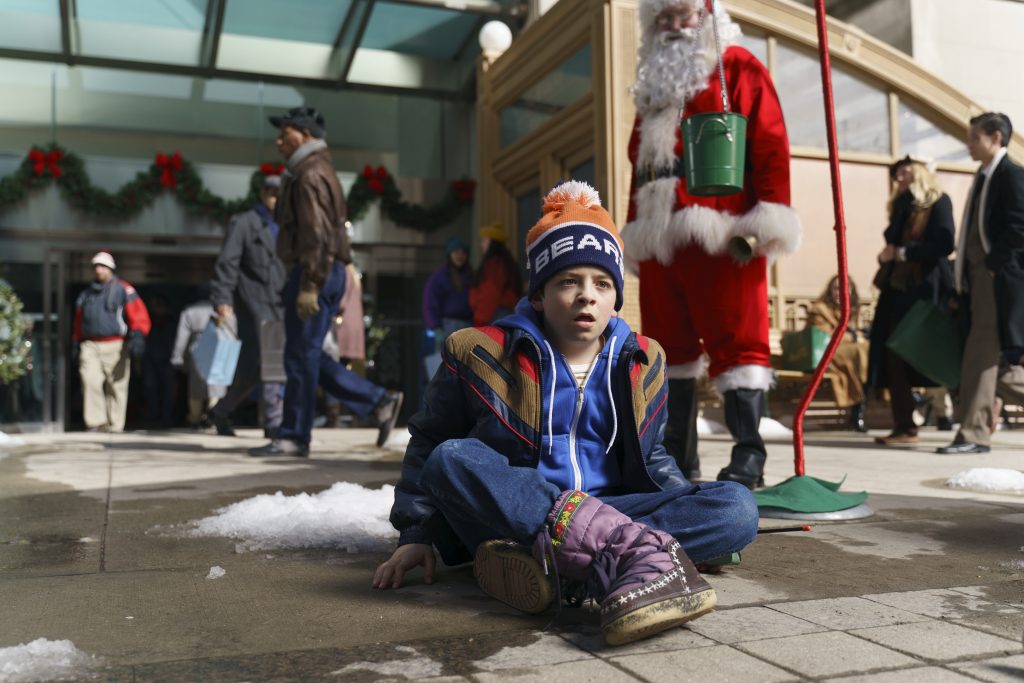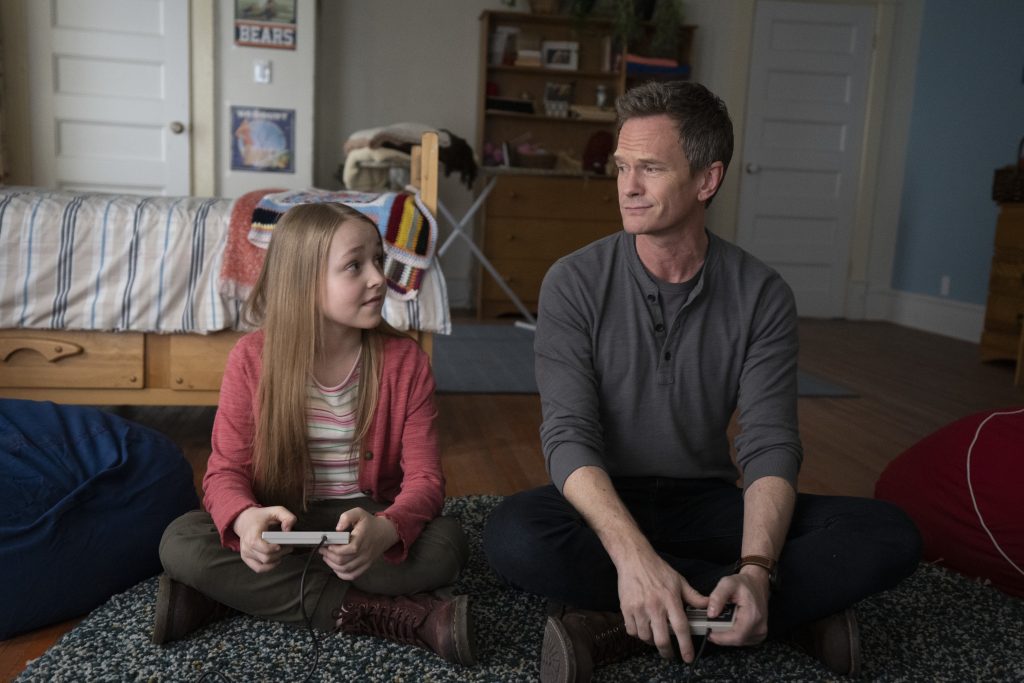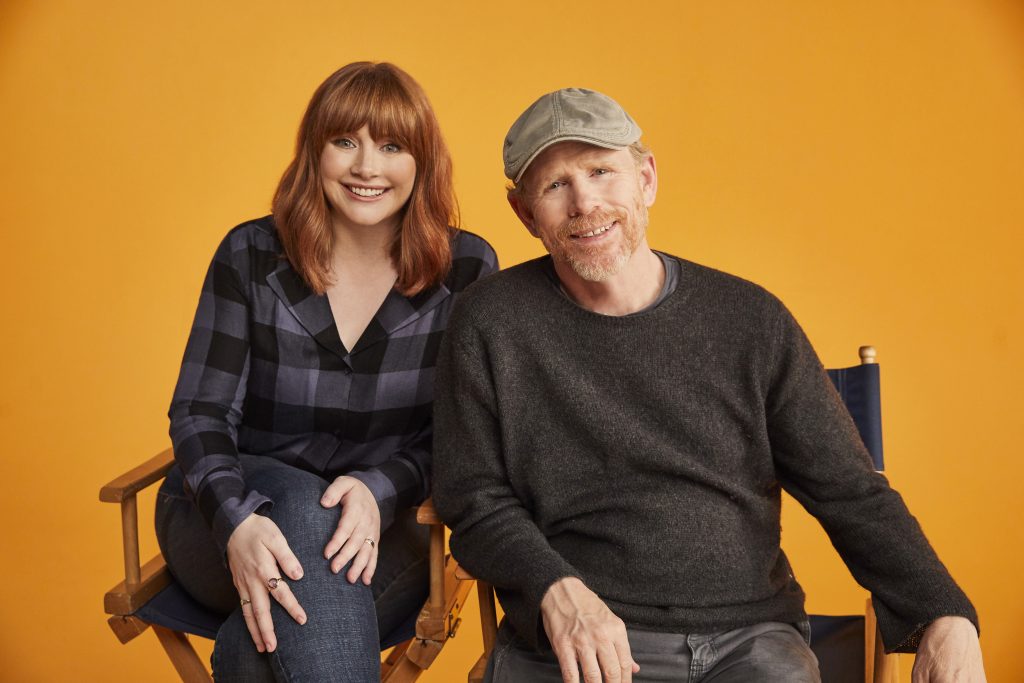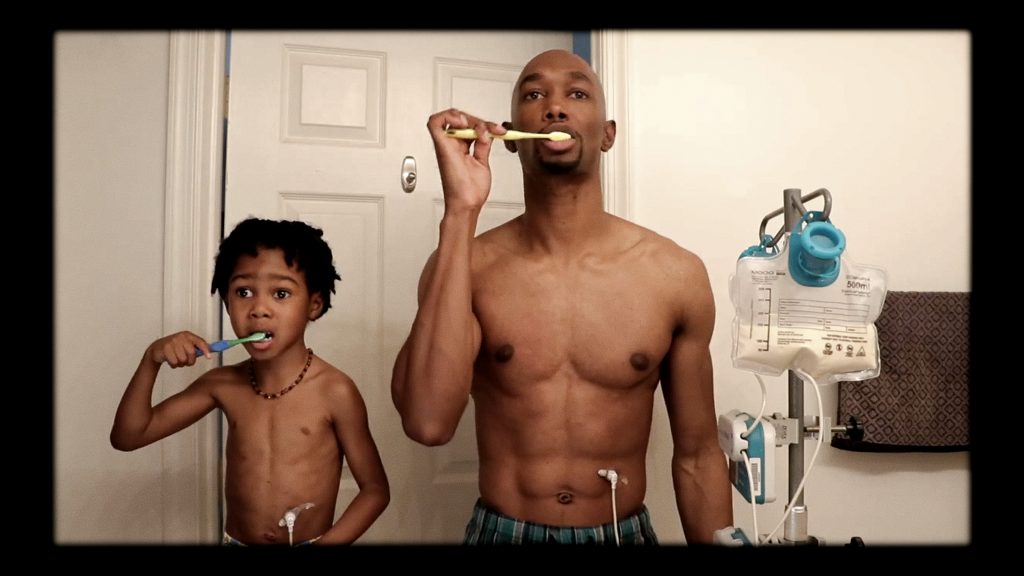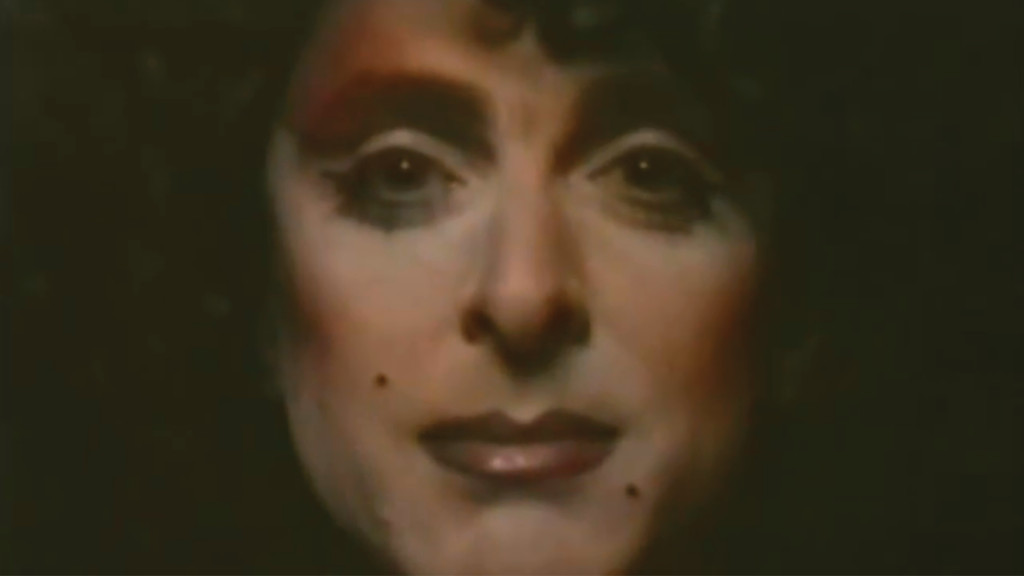April 19, 2022
by Carla Hay
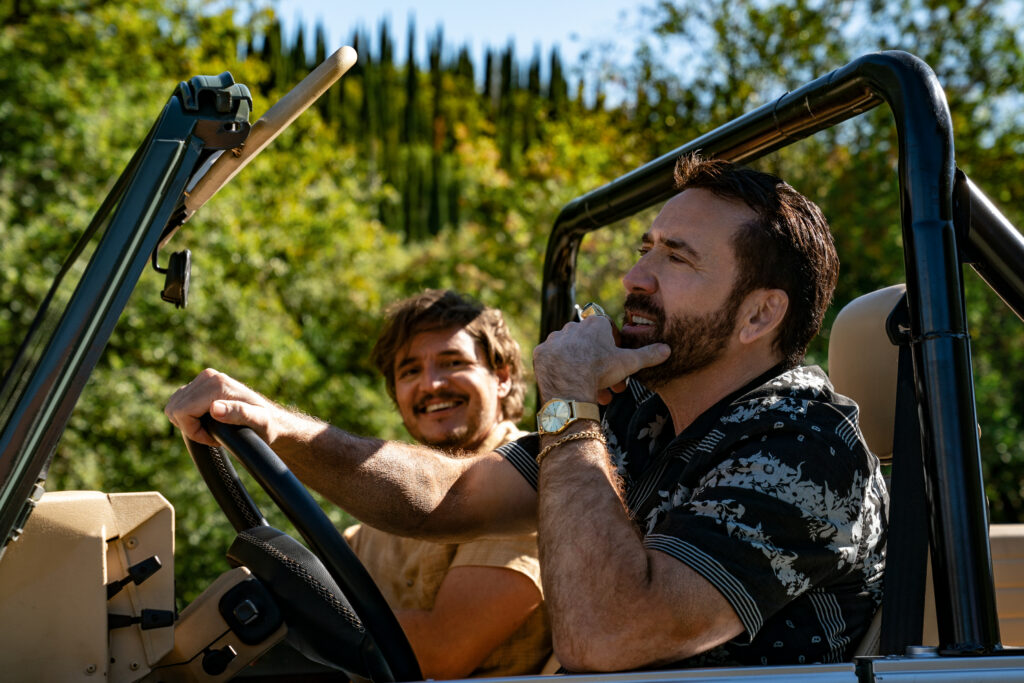
“The Unbearable Weight of Massive Talent”
Directed by Tom Gormican
Some language in Spanish with subtitles
Culture Representation: Taking place primarily in Los Angeles and Mallorca, Spain, the action comedy “The Unbearable Weight of Massive Talent” features a cast of white and Latino characters (with a few African Americans) representing the working-class, middle-class and wealthy.
Culture Clash: Desperate for money, famous actor Nick Cage agrees to a $1 million fee to appear at a wealthy superfan’s birthday party in Mallorca, where he reluctantly gets in the middle of an international espionage case.
Culture Audience: “The Unbearable Weight of Massive Talent” will appeal primarily to fans of star Nicolas Cage and comedies that are satires of real people.
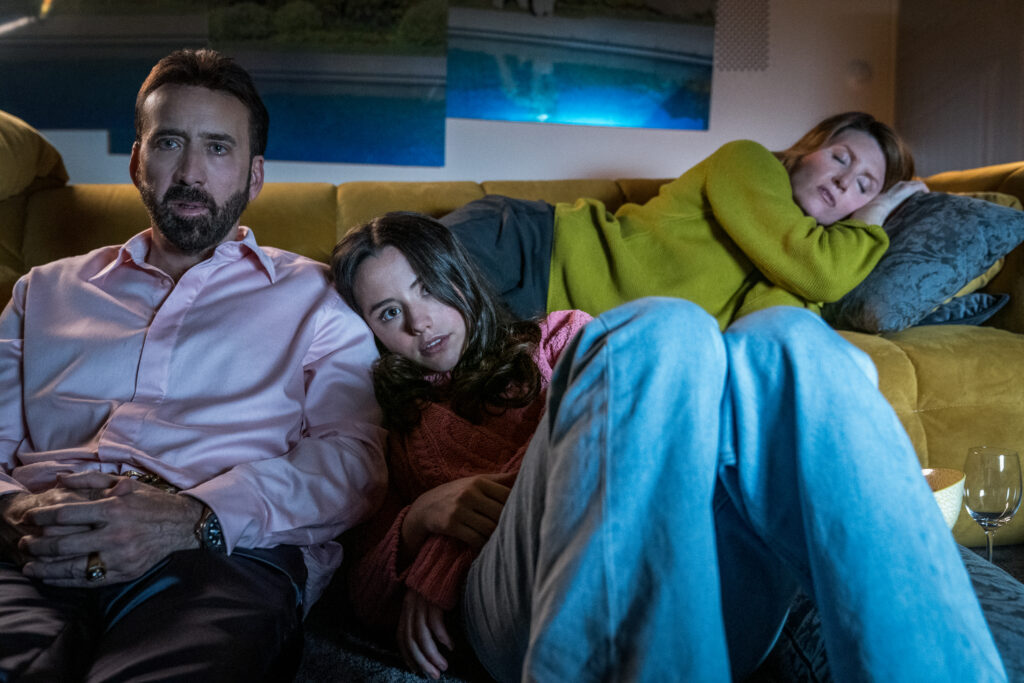
It’s not the comedy masterpiece that some people have been hyping it up to be, but “The Unbearable Weight of Massive Talent” has plenty of hilarious moments in spoofing Nicolas Cage’s public persona and action films. The movie has some genuinely inspired scenes before the film’s last 20 minutes devolve into stereotypical formulas seen in many other comedic spy capers. “The Unbearable Weight of Massive Talent” is also an above-average buddy comedy, with touches of family sentimentality to balance out some of the wackiness.
Tom Gormican directed “The Unbearable Weight of Massive Talent” from a screenplay that he co-wrote with Kevin Etten. It’s Gormican’s second feature film, after he made his feature-film directorial debut with the forgettable 2014 male-friendship comedy “That Awkward Moment.” Gormican’s background is mainly as a TV writer/producer, with credits that include “Scrubs,” “Desperate Housewives” and “Ed.” At times, “The Unbearable Weight of Massive Talent” veers into stale TV sitcom territory, but the movie has enough originality and charm to rise above its repetitive clichés. “The Unbearable Weight of Massive Talent” has its world premiere at the 2022 South by Southwest (SXSW) Film Festival in Austin, Texas.
Cage has said in interviews that he initially rejected the idea of doing this movie. It’s a good thing that he changed his mind, because “The Unbearable Weight of Massive Talent” is easily one of the funniest comedy films that Cage has done in decades. In the movie, he plays two versions of himself: (1) main character Nick Cage, a present-day version of himself, and (2) Nicky Cage, a younger, brasher version of Cage, circa the late 1980s/early 1990s. (According to the movie’s production notes, Nicky’s physical appearance was inspired by how the real Cage looked in his 1990 movie “Wild at Heart.”)
Nicky has de-aging visual effects for his face, and he appears to Nick as a figment of Nick’s imagination, in moments when Nick is feeling insecure. Nicky’s blunt and sometimes crude conversations with Nick (which are either pep talks, insults or both) are among the more memorable parts of the movie. Nicky has a habit of yelling out “I’m Nick fucking Cage!,” in an elongated way, as if he’s a WWE announcer yelling, “Let’s get ready to rumble!” before a wrestling match. In the film’s end credits, the actor listed as portraying Nicky is Nicolas Kim Coppola, which is a cheeky nod to Cage’s birth surname Coppola. (Numerous movie fans already know that Cage is part of the famous Coppola movie family.)
In the beginning of “The Unbearable Weight of Massive Talent,” Nick is a world-famous actor in Los Angeles, but he’s currently not getting the acting roles that he wants. Nick has been struggling with being labeled a “has-been” who’s been doing a lot of low-budget, low-quality movies in recent years. (Real-life filmmaker David Gordon Green has a cameo as himself in an early scene in the movie where Nick tries to impress him with an impromptu monologue reading.)
When Nicky shows up and talks to Nick, it’s usually to remind Nick that his younger self would never have stooped to the level of the type of work that Nick is doing now. In one of the movie’s early scenes, Nicky is lecturing Nick about it during a drive in Nick’s car, with Nick driving. A defensive Nick snaps back: “Hello! It’s my job! It’s how I pay my bills. I have to feed my family.” Nick ends the conversation by telling Nicky, “You’re annoying!” And then Nick kicks Nicky out of the car.
Nick’s fast-talking agent Richard Fink (played by Neil Patrick Harris, in a cameo role) tells Nick about a job offer from a Nick Cage superfan in Mallorca, Spain. This wealthy fan wants to pay Nick $1 million to make a personal appearance at the fan’s birthday party. Nick says no to the idea, because he thinks that these types of personal appearances are beneath him as a “serious actor.”
However, because Nick gets rejected for a movie role that he had been counting on getting, and because he has high-priced divorce payments and other bills, a financially desperate Nick agrees to the birthday party job offer. Nick makes it clear to Richard that this personal appearance better not include anything involving kinky sex. Nick has no idea that what he thinks will be an easy gig will turn out to be a life-threatening, mind-bending experience for him and other people.
Nick isn’t just having problems in his career. His personal life is also messy. Nick has a tension-filled relationship with his ex-wife Olivia (played by Sharon Horgan), a former makeup artist whom he met on the set of his 2001 movie “Captain Corelli’s Mandolin.” It’s revealed in “The Unbearable Wright of Massive Talent” that one of the main reasons why they divorced was because Olivia thought that Nick put his career above everything else in his life.
Nick and Olivia have a daughter named Addy (played by Lily Sheen), who’s about 15 or 16 years old. Addy is usually annoyed with Nick because she thinks he forces her to do things (such as watch movies) that are according to what he wants to do and his personal tastes, without taking into consideration Addy’s own personal wants and needs. For example, Nick has insisted that Addy watch the 1920 horror film “The Cabinet of Dr. Caligari,” even though Addy has no interest in seeing this movie.
Addy also thinks Nick has been a neglectful father for most of her life. That’s why Nick and Addy are in therapy together. But as an example of Nick’s self-centered ways, a therapy session that’s shown in the movie reveals that Nick spends most of the time talking about himself, while Addy sulks in a corner on a couch. Their therapist named Cheryl (played by Joanna Bobin) has to listen to Nick ramble on about his career problems, while she tries to steer the conversation back to how to improve his personal relationships.
Nick is so financially broke, he doesn’t have a permanent home, and he’s living at a hotel. When he gets locked out of his hotel room due to non-payment, he calls his agent Richard to tell him that he’s taking the birthday party job. A self-pitying Nick also tells Richard that he’s going to quit being an actor. On his way to Mallorca, Nick has no idea that he’s gotten on the radar of the CIA, which has been tracking the activities of the fan who has hired Nick to be at the fan’s birthday party. The CIA has this superfan under investigation for being the leader of a ruthless international arms cartel.
Two CIA operatives who have been assigned to the case are named Vivian (played by Tiffany Haddish) and Martin (played by Ike Barinholtz), who are surprised and confused when they see Nick disembarking from the private plane that the superfan has chartered for this trip. Vivian, who has a take-charge and quick-thinking personality, immediately pretends to be an adoring Nick Cage fan, and stops him at the airport to take a selfie photo with him. It’s really a ruse to plant a tracking device on Nick. Vivian and Martin are generic and underwritten roles, so Haddish and Barinholtz don’t do much that’s noteworthy in the movie.
In Mallorca, Nick is taken to a lavish cliffside mansion, where he is greeted by several employees of this rich superfan, who is described as a mogul in the olive grove business. The fan’s name is Javi Gutierrez (played by Pasco Pascal), and he is so unassuming on first impression, Nick initially mistakes Javi for one of the servants, because Javi was the one who drove Nick to this mansion by speedboat. The two people in Javi’s inner circle who are the closest to him are his cousin/right-hand man Lucas Gutierrez (played by Paco León) and a savvy business person named Gabriela (played by Alessandra Mastronardi), nicknamed Gabi, who is Javi’s director of operations.
Nick soon finds out that Javi didn’t just invite him to make an appearance at Javi’s birthday party. Javi has written a movie screenplay, and he wants Nick to star in this movie. Javi is crushed when Nick tells him that he’s going to quit acting, so Javi desperately tries to get Nick to change his mind One of the running gags in “The Unbearable Weight of Massive Talent” is how Nick reacts to Javi’s attempts to befriend Nick and get Nick to read his script. It should come as no surprise that Javi makes revisions to the screenplay, based on a lot of the shenanigans that he experiences with Nick.
As shown in the movie’s trailer, Vivian and Martin recruit/pressure Nick to spy on Javi for the CIA. Meanwhile, things get more complicated with the kidnapping of Maria Delgado (played by Katrin Vankova), a teenage daughter of a politician who’s running for a high office in Spain. There are entanglements with a thug named Carlos (played by Jacob Scipio) and a group called the Carabello crime family. And it should come as no surprise that Addy and Olivia somehow get mixed up in this mess too.
Along the way, there’s some drug-fueled comedy that’s intended to make the most of Cage’s slapstick skills. First, Nick accidentally drugs himself with a potentially lethal dose of gaseous poison. Later, Nick and Javi take LSD together and have a bonding experience where they go through various levels of elation and paranoia.
Nick and Javi’s budding friendship is at the heart of the movie. However, there are also some standout moments involving Nicky, Olivia and Addy and how their relationships to Nick end up evolving. (Nicky spontaneously does something outrageous, when he kisses Nick, in a scene that will have viewers either shocked, roaring with laughter or both.)
Pascal is pitch-perfect in his role as Javi, who might or might not be the movie’s biggest villain. When secrets are revealed, they’re not too surprising, but one of the best things about “The Unbearable Weight of Massive Talent” is that it doesn’t make Javi into a meaningless caricature. Even though Cage is the larger-than-life central character in the movie, Pascal holds his own and can be considered a scene-stealer.
“The Unbearable Weight of Massive Talent” has the expected stream of jokes about previous real-life movies of Cage. Among those that get name-checked or parodied include “Con Air,” “Face/Off,” “Moonstruck,” “Valley Girl,” “The Croods: A New Age,” “Gone in 60 Seconds,” “The Rock,” “Leaving Las Vegas,” “National Treasure” and “Guarding Tess.” Also in “The Unbearable Weight of Massive Talent” is a recurring joke about the animated film “Paddington 2” (which is not one of Cage’s movies) and how this family film sequel about a talking bear affects certain people who watch it.
Cage is a versatile actor who tackles his role in “The Unbearable Weight of Massive Talent” with gusto. (He’s also one of the movie’s producers.) Cage makes this movie work so well because he’s fully on board with laughing at himself. Not too many well-known actors would risk doing a movie where they have to poke fun at their triumphs and failures, but it’s precisely this risk-taking that has made Cage one of the most interesting and unpredictable actors of his generation. “The Unbearable Weight of Massive Talent” does indeed have massive talent, but this talent helps the movie soar instead of sink.
Lionsgate will release “The Unbearable Weight of Massive Talent” in U.S. cinemas on April 22, 2022. The movie is set for release on digital and VOD on June 7, 2022, and on 4K Ultra HD and Blu-ray on June 21, 2022.

